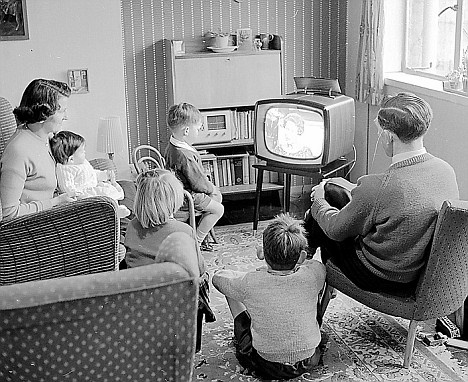Old-Style Marketing
Marketing used to be intelligent.
When Sears and Roebuck wanted to sell radios to farmers, it created a radio station that discussed issues highly relevant to farmers. Sears sold thousands of radios and later sold the radio station at a huge profit.
When Procter and Gamble wanted to sell soap to housewives, it created a daytime television drama (or a ‘soap opera’) that appealed to their target audience. P&G sold a ton of soap and also managed to create one of the most enduring (and profitable) media forms of the 20th century.
The model was simple – find your target audience, continuously deliver something valuable to that audience through a media platform, and then offer products and services specifically designed for that captive audience.
These marketing techniques were difficult and expensive to execute, but they paid off big time. Companies worked hard to build attention and trust, and they used those to sell their products.
Pretty brilliant, right?
The Mass Media Era
Then came mass media marketing. In this era, media stopped being produced by companies and started being produced by newspapers, radio stations, and television channels. They were able to attract such large audiences that they charged companies a lot of money to ‘rent out’ their audience to marketers who wanted to push their products.
Media barons were extremely successful in this era for several reasons:
- Channels were scarce. A television might only have three channels, and there were a finite number of radio stations and newspapers. If you wanted to reach a large audience, these were your only options.
- Attention was plentiful. Because there were so few media options, everyone watched the same shows and read the same papers.
- Audiences were locked in. It was normal to sit through a “message from our sponsor”, because people were used to it and didn’t have many other channels to switch to.
- Media production costs were expensive. Creating a TV show, a book, or a magazine demanded a lot of work and money. The only people with deep enough pockets to invest into creating media were the large media companies.
- Only mass audiences had high value. The same message went out to everyone watching, regardless of demographics or personal interests. Only companies that were looking for mass appeal could get the most out of this exposure, and advertising spots were priced accordingly.
Marketing in this era became much easier: hire an ad agency, rent an audience, push a message, repeat. All the marketer had to do was figure out where and when to interrupt the audience, and how to convince it within thirty seconds to trust the company enough to hand over some money. Marketing was still expensive, but significantly easier.
The Connection Economy
Sometime around the turn of the millennium, we entered into a new era called the Connection Economy, and with that era came some new rules.
What are the new rules?
- Channels are unlimited. It’s not just television options that have exploded. There are now millions of magazines, websites, blogs, and newsfeeds that have become legitimate options for our attention.
- Attention is scarce. All of these new channels are desperately competing for attention. They want more viewers, subscribers, and followers, because attention has become the finite currency of the new world. If you command attention, you’re the boss.
- Audiences can choose to block you out. Consumers are smarter and more discerning than ever. They demand that your channel entertain better and provide more value than the other channels. If it doesn’t, they turn to a new channel with a simple click.
- Media production costs have come down to zero. With a few clicks and zero dollars, you can have your own publishing platform and distribute your content to thousands of people. There are individuals who have larger audiences than television shows.
- Niche audiences are just as valuable as mass audiences. With unlimited channels, there is now just as much value down at the end of the long tail as there is with the mass markets. Your book doesn’t have to be on the New York Times Best Seller list to still make a huge impact and profit.
Mass media companies will always remain, but their names will change. Facebook, Twitter, LinkedIn will replace Time, the New York Times, and NBC.
They will keep trying to convince you that nothing has changed, that the model still works. Pay us money and we will let you interrupt our audience so that you can make a business pitch they probably don’t care about.
That model will continue to work for some companies, but given the massive changes in our world, it doesn’t seem very intelligent to keep believing that it is still the only option for your business.
Intelligent companies are taking the new rules and leveraging them into a powerful sales- and relationship-building machine.
They demonstrate authority, they don’t just claim it.
They earn trust, they don’t beg for it.
They deliver value, and then ask for money.
They ask for permission, then they interrupt.
They build massive or specifically-targeted loyal audiences for a fraction of the cost.
They own their marketing, and they control their relationships instead of renting them.
What are you doing?
Image Credit: Paul Townsend on Flickr

Pingback: Audience Relationship Circles (ARCs)()